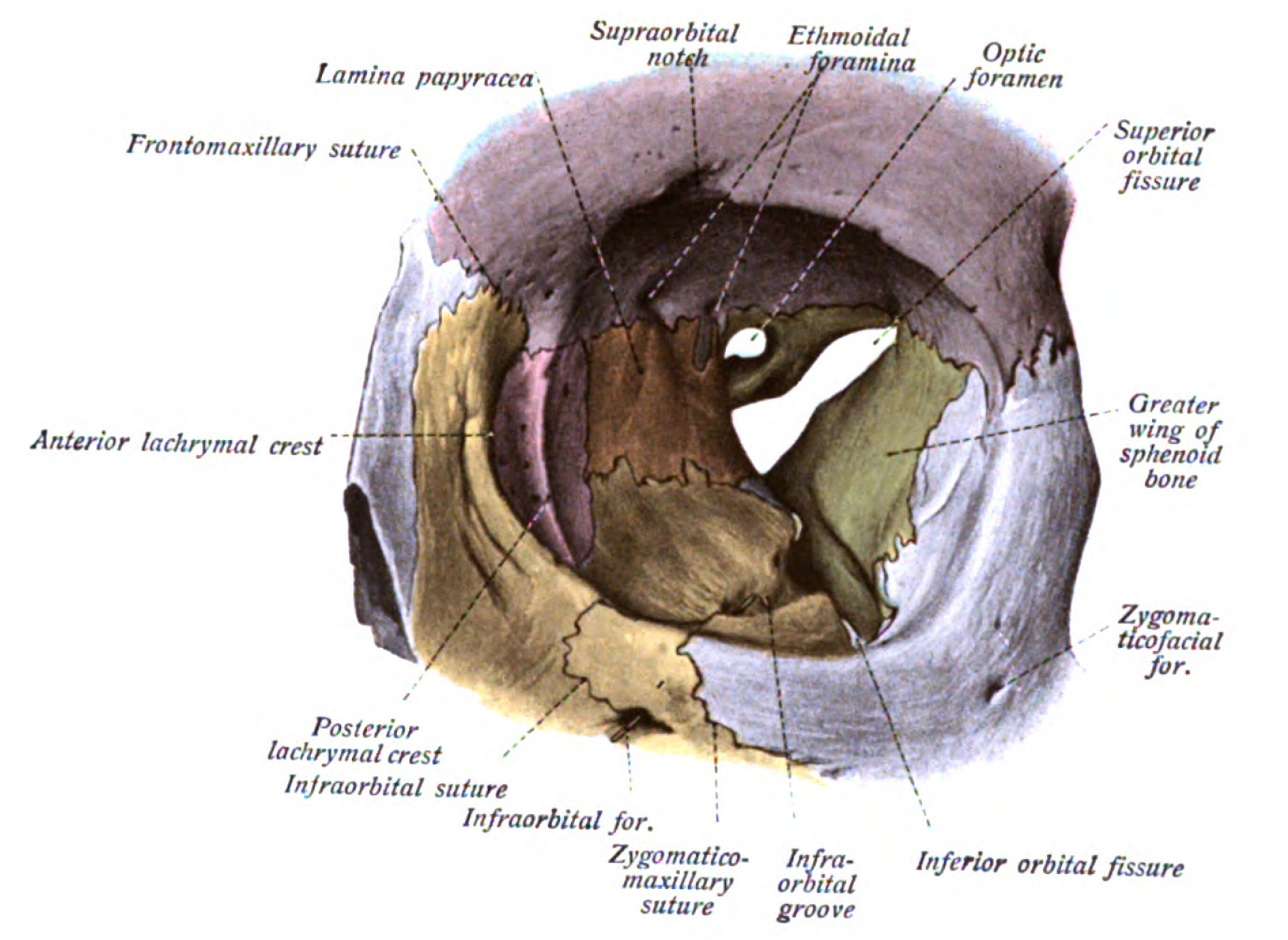Playlist
Show Playlist
Hide Playlist
Innervation of Extraocular Muscles – Orbital Muscles and Innervation
-
Slides 22 OrbitalMusclesInnervation HeadNeckAnatomy.pdf
-
Download Lecture Overview
00:01 When we talk about the extraocular muscles, it’s also very important to understand their innervation. As we work through the innervation of the extraocular muscles, we will summarize their innervation with a useful mnemonic. But for now, we have three cranial nerves that will innervate the muscles that attach to the eyeball. The three cranial nerves that innervate these extraocular muscles will be oculomotor, abducent, and the trochlear nerve. So we’re looking at cranial nerves III for oculomotor, IV for trochlear, and then VI for the abducent. The oculomotor bears the brunt of this innervation as we’ll see. Here is your superior rectus. Oculomotor is its innervation. Here is your inferior rectus, again oculomotor. The rectus that’s on the lateral side, the lateral rectus shown here in bright red, this is where we have a change in innervation to the abducent or cranial nerve VI. Medial rectus is here, oculomotor again. Inferior oblique, oculomotor and then the superior oblique is going to be innervated by the trochlear nerve, cranial nerve IV. Here we’re looking at the mnemonic for the lateral rectus. 01:36 This is going to be LR6, lateral rectus, LR and then 6 for cranial nerve VI which is the abducent nerve. The superior oblique is going to be innervated by your trochlear nerve, cranial nerve IV. So the mnemonic here is SO for superior oblique and then 4 for cranial nerve IV. Then the rest of these are very, very easy because all the rest of them are going to be innervated by cranial nerve III. This would be the oculomotor nerve. 02:10 Now, let’s take a look again at the levator palpebrae superioris. First, its innervation is like the majority of the extraocular muscles. It’s going to be innervated by cranial nerve III, oculomotor as well. Though many of the fibers of the levator palpebrae superioris are skeletal muscles fibers, it’s important for you to realize that there are some smooth muscle fibers that pass from its inferior surface and attach into the eyelid itself. 02:41 These muscle fibers are very important in maintaining eyelid elevation, keeping that upper eyelid in an open position. As we are all looking at the smooth muscle fibers at this particular point, they will not be innervated by the somatic fibers of oculomotor III. Instead, there will be sympathetic fibers that will innervate these particular smooth muscles. 03:07 This has clinical relevance in the case of a lesion of sympathetics or if there’s a lesion of cranial nerve III, the nerve that is conveying these sympathetic nerve fibers. 03:21 If there is a lesion of these sympathetic components, this can result for example in Horner's syndrome. One of the symptoms or signs if you will of Horner’s is a drooping eyelid. 03:36 This is known as ptosis. So the upper eyelid will be in a depressed state.
About the Lecture
The lecture Innervation of Extraocular Muscles – Orbital Muscles and Innervation by Craig Canby, PhD is from the course Head and Neck Anatomy with Dr. Canby.
Included Quiz Questions
Which of the following muscles is NOT innervated by the oculomotor nerve?
- Lateral rectus
- Superior rectus
- Inferior oblique
- Medial rectus
- Inferior rectus
What innervates smooth muscle fibers of the levator palpebrae superioris muscle?
- Sympathetic fibers that travel with cranial nerve III
- Abducens nerve
- Trochlear nerve
- Somatic fibers of cranial nerve III
- Facial nerve
What is the only muscle innervated by the trochlear nerve?
- Superior oblique
- Lateral rectus
- Levator palpebrae
- Superior rectus
- Medial rectus
Customer reviews
5,0 of 5 stars
| 5 Stars |
|
5 |
| 4 Stars |
|
0 |
| 3 Stars |
|
0 |
| 2 Stars |
|
0 |
| 1 Star |
|
0 |





